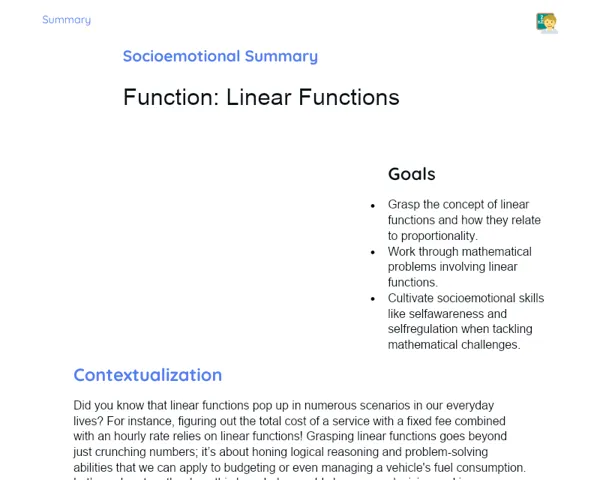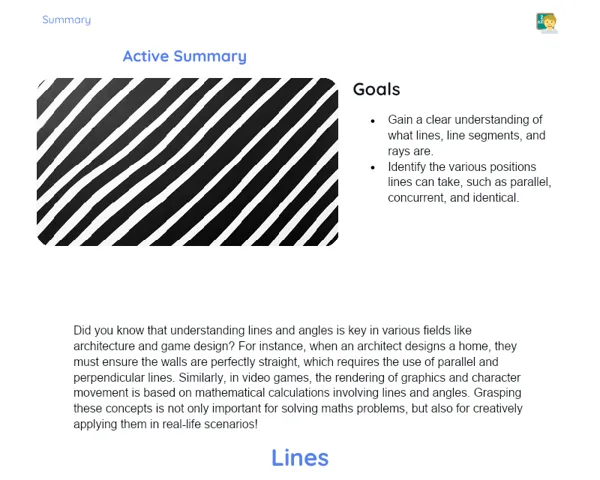Summary Tradisional | Symmetry in the Cartesian Plane: Introduction
Contextualization
Symmetry is a crucial aspect of our everyday lives, evident in nature, art, and architecture. When we look at the Cartesian plane, symmetry helps us grasp how points and shapes relate to one another through axes that act like mirrors—namely the X-axis and Y-axis. These axes split the plane into four quadrants and are vital for pinpointing and working with points and geometric shapes.
You can spot symmetry in various familiar things, like the wings of a butterfly that mirror each other or the stunning façades of iconic landmarks such as the Taj Mahal. In the Cartesian plane, symmetry allows us to find corresponding points and create congruent shapes—an essential skill not only in maths but also in fields like physics and engineering. Developing the ability to identify and draw symmetric points relative to the axes and the origin is fundamental for deepening our understanding of space and geometric relationships.
To Remember!
Introduction to Symmetry in the Cartesian Plane
Symmetry refers to a quality where one half of a figure or object mirrors the other. In the Cartesian plane, we can delve into symmetry in relation to the X and Y axes. These axes divide the plane into four quadrants, functioning as mirror lines that reflect points and figures.
When we mention symmetry concerning the X-axis, we're indicating that each point on one side of the axis has a matching point on the opposite side, located at the same distance from the axis. The same principle applies to the Y-axis. This understanding allows for a clear and systematic way to grasp the positions and relationships among points and figures within the plane.
Grasping symmetry in the Cartesian plane is essential for manipulating and constructing geometric shapes. This concept aids in creating congruent figures and enhances our understanding of spatial and geometric properties of diverse shapes. Moreover, symmetry finds practical applications in various fields, including engineering, architecture, and art.
-
Symmetry means one half mirrors the other.
-
The X and Y axes divide the Cartesian plane into four quadrants.
-
Symmetry with respect to the axes aids in understanding the positions and relationships of points and figures.
Symmetry Relative to the X-Axis
To identify a point's symmetric counterpart concerning the X-axis, we retain the x-coordinate while changing the sign of the y-coordinate. For instance, a point with coordinates (3, 4) has its symmetric point relative to the X-axis at (3, -4). This process is straightforward and can be easily visualized in the Cartesian plane.
Understanding symmetry concerning the X-axis is invaluable for creating congruent geometric shapes and for recognizing the distribution of points relative to a horizontal line. This concept is widely used in mathematics and other disciplines to tackle problems involving reflection and mirroring.
Practicing symmetry concerning the X-axis helps students grasp geometry more deeply and familiarizes them with properties of various shapes in the plane. This knowledge is crucial for progressing to advanced geometric topics.
-
To find the symmetric point concerning the X-axis, invert the sign of the y-coordinate.
-
Symmetry regarding the X-axis helps generate congruent geometric figures.
-
This concept is widely applied in solving reflection and mirroring problems.
Symmetry Relative to the Y-Axis
To find the symmetric point relative to the Y-axis, we maintain the y-coordinate and change the sign of the x-coordinate. For example, a point with coordinates (-5, 2) will have its symmetric counterpart with respect to the Y-axis at (5, 2). This method is akin to the symmetry concerning the X-axis but applied to a vertical line.
Understanding symmetry relative to the Y-axis is essential for comprehending how points and figures are arranged with respect to a vertical line. This idea not only applies in mathematics but also stretches into disciplines such as physics and engineering, where reflections about a vertical line can play a role.
Engaging with symmetry about the Y-axis will enhance students' spatial visualization and geometric comprehension, laying the foundation for constructing and analyzing complex geometric figures.
-
To find the symmetric point concerning the Y-axis, invert the sign of the x-coordinate.
-
Symmetry concerning the Y-axis aids in grasping the distribution of points related to a vertical line.
-
This concept is relevant in various fields, including physics and engineering.
Symmetry Relative to the Origin
To identify the symmetric point concerning the origin of the Cartesian plane, we invert the signs of both coordinates. For instance, with a point at (1, -3), its symmetric counterpart regarding the origin will be (-1, 3). This type of symmetry is particularly useful for understanding how points reflect across the origin (0,0).
Symmetry concerning the origin is important to comprehend how points and figures behave when reflected about a central point. This concept has practical applications across various fields, including mathematics, physics, and design, where central reflections can aid in creating patterns and symmetrical designs.
By practicing symmetry about the origin, students cultivate a more comprehensive grasp of geometry and the properties of figures within the plane. This knowledge is vital for delving into more intricate topics in mathematics and science.
-
To find the symmetric point concerning the origin, invert the signs of both coordinates.
-
Symmetry concerning the origin aids in understanding reflection relative to the point (0,0).
-
This concept has practical applications in mathematics, physics, and design.
Key Terms
-
Symmetry: A property where one half mirrors the other.
-
Cartesian Plane: A plane defined by the X and Y axes, which meet at the origin (0,0).
-
X-Axis: The horizontal line within the Cartesian plane.
-
Y-Axis: The vertical line within the Cartesian plane.
-
Origin: The point (0,0) where the X and Y axes intersect.
-
Symmetric Points: Points that reflect each other concerning an axis or the origin.
Important Conclusions
In this lesson, we delved into the concept of symmetry in the Cartesian plane, focusing on how to spot and plot symmetric points in relation to the X and Y axes, as well as the origin. We established that symmetry is a trait where one half of a figure or point mirrors the other, and this property is applicable in constructing and analysing geometric figures. We also highlighted everyday examples of symmetry—like in butterflies and renowned buildings—to underscore the significance of this concept.
We learned to determine the symmetric point of a point relative to the X-axis by inverting the sign of the y-coordinate, and similarly, to find the symmetric point regarding the Y-axis, we invert the sign of the x-coordinate. When exploring symmetry about the origin, we invert the signs of both coordinates. These methods form the foundational understanding of spatial and geometric relationships in the Cartesian plane, with applications across various fields such as mathematics, physics, and engineering.
Symmetry in the Cartesian plane not only aids in solving mathematical challenges but also allows us to appreciate the beauty and harmony present in our world. By mastering these concepts, students cultivate spatial visualisation and geometric understanding skills that are essential for advancing into more complex studies. We encourage students to keep exploring and applying these ideas to solidify their knowledge in varied contexts.
Study Tips
-
Review examples and exercises completed in class by plotting points and figures in the Cartesian plane to visualize symmetry better.
-
Practice finding symmetric points concerning the X, Y axes, and the origin using different coordinates to reinforce your understanding.
-
Explore geometry apps and software that allow for manipulation of figures in the Cartesian plane for interactive visualisation of symmetries.



